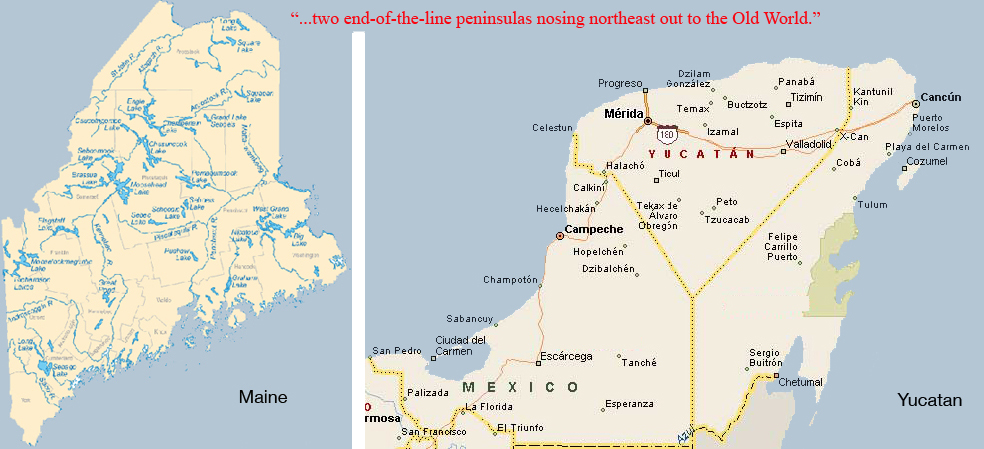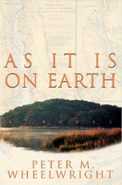A number of reviewers have referred to As It is On Earth as a New England Story. Well,…yes and no. A good deal of the book actually involves Mexico; specifically, the Yucatan. I like their geographical shapes and orientation. But, more importantly, both New England and Mesoamerica figure prominently in the Age of Discovery. Both indigenous peoples were overrun by “…adventurers under their banners of Heaven.” And so, I think As It Is On Earth is a larger, more global story. Jared Diamond left a fourth item out in his wonderful title “Guns, Germs, and Steel”…that is, the Holy Book that underwrote the other three.
Forking my motul-style eggs and re-fried beans, thinking about Palenque in the out-of-place company of Bin and Jemma, I felt off-center. Or double centered, caught in an ellipse, one foot in the Yucatan and one in Maine – two end-of-the-line peninsulas nosing northeast out to the Old World. The ripples of the Yucatan’s history spread away from mine, familiar, inevitable and cheerless: across the “Old Seville” courtyard, out through the hotel’s screening portico of Castilian archways and brightly painted stucco walls, and into the cobble-stoned streets of Merida’s ciudad historica where the Plaza Mayor and the old Dominican Cathedral built from the plundered stones of Mayan temples still held dominion, then past the protective city limits – la zona hispanic – to the countryside, to the lush hotel-haciendas holding back the tropical forest, where the housekeepers – offspring of fierce Toltecs, tamed, converted, and turned out of their own homes – stare, lost to themselves, into the faith-shaking remnants of the Lacandon jungle…The Holy Roman Emperor’s ghostly band of intruding Spanish Christians, loaded up with death-dealing viral DNA from their life-nurturing farm animals back home, hacks its way along in fear and trembling.
Of course, strictly speaking, Maine isn’t an actual peninsula. It just feels like one,…hanging too far into the cold Canadian Atlantic.








